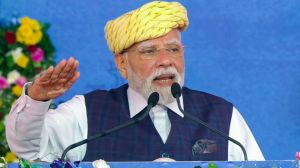AIDS: mathematics to the rescue
It might be possible to stop the AIDS epidemic purely through use of available drug therapies, a mathematical model based on San Francisco p...

It might be possible to stop the AIDS epidemic purely through use of available drug therapies, a mathematical model based on San Francisco predicts. If the model developed by the University of California, Los Angeles researchers holds up, it would mean the pandemic could be slowed, even eradicated.
The UCLA model, which appears in Wednesday’s issue of The Lancet Infectious Diseases uses a mathematical method called ‘‘uncertainty analysis’’ to calculate the impact of a range of variables, offering possible outcomes from decades of use of anti-HIV drugs in San Francisco. And even making what study head Sally Blower considers worst-case assumptions, such as the evolution of drug-resistant viruses that remain infectious and an increase in unsafe sexual activity among the treated individuals, the model predicts the drugs will stop the San Francisco epidemic well before the end of this century. ‘‘That’s with the current drugs,’’ Blower concluded. ‘‘If you got better drugs—and we must assume that we will have better drugs soon—then things would come along much, much more quickly.’’
The UCLA team assumes anti-HIV treatments lower the amount of virus in the bloodstream by at least half and up to 100-fold. That means widespread use of the drugs leads HIV-positive individuals to actually be less infectious to their sexual partners. The team also assumes that drug resistant strains of HIV will arise but will be less infectious.
The jury is still out on the issue: mathematician Stephen Gange of Johns Hopkins School of Medicine said in their studies of patients in Uganda and America, treatment only marginally affects a person’s ability to infect. Gange works with Dr Ronald Gray, who has closely monitored the outcomes of HIV treatment at Johns Hopkins in Baltimore, in a national cohort of female patients in the United States and in a remote part of the East African nation of Uganda. Their data, crunched through Gange’s mathematical models, suggests a different picture.
The Gray/Gange data, presented last month at the 14th International AIDS Conference in Barcelona, Spain, found anti-HIV medicines decreased by an essentially insignificant amount the risk that any given individual might transmit HIV sexually. And that modest effect ‘‘would be obliterated,’’ Gray insisted, by the sorts of behavioural changes now seen in the United States, such as more unprotected sex.
The main reason treatment won’t be enough to slow the epidemic, Gange insists, is that in the real world most patients manage to sustain only a 50 % or less reduction in viral loads—that’s below the bottom end in the UCLA model.
Blower counters that her model is based on the experiences of physicians and patients in San Francisco, where some 70 % of the HIV population is in treatment, and most have experienced decreases in their viral loads of well over 50 %. She insists that any community that attains the same levels of treatment should experience similar declines in HIV incidence over time. The San Francisco model, Blower says, ‘‘could be aglobal model.’’
In Gange’s real world most HIV-positive Americans remain untreated, mainly because they don’t realise they are infected. Blower concedes that if a very small percentage of the HIV population is treated, ‘‘you’ll have very little impact on transmission’’ of HIV. But, she counters, that is why you must aim for 90 percent coverage with medication.(LA Times-Washington Post)
Photos



- 01
- 02
- 03
- 04
- 05




























